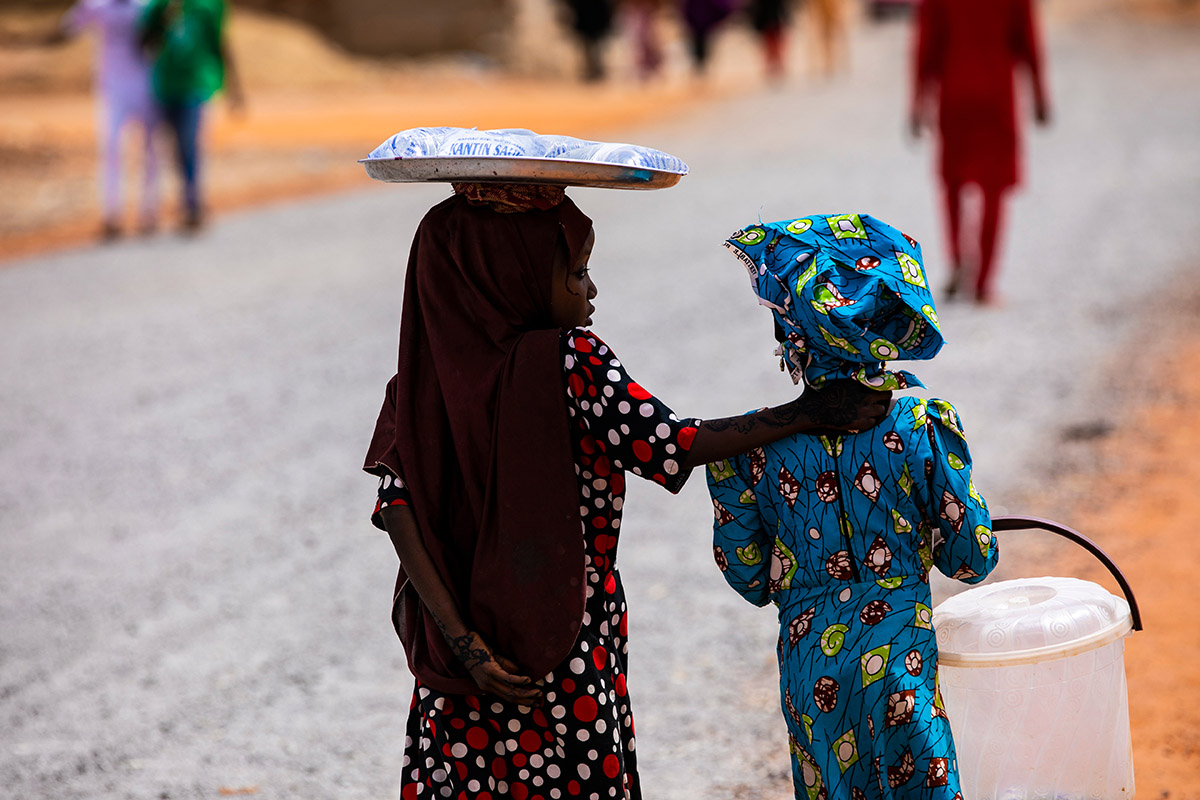Beyond the Headlines: The Hidden Struggles of Child Labour in Nigeria
June 15by Lilian Efobi and Olanike Buari
Emifeoluwa was only five years old when she was brought to Lagos from Kogi State by a family friend, under the promise that she would be well cared for. That promise was never fulfilled. Instead, Emifeoluwa became a maid and was made to do domestic chores, while the other children in the household went to school, played, and lived freely. She had no toys, no books, no rest, no dreams. Just chores and silence. Emifeoluwa’s story mirrors that of millions of children across Nigeria and around the world, all trapped in the quiet cruelty of child labour.
According to the International Labour Organization, child labour is work that deprives children of their childhood, potential, and dignity. It is work that harms their physical and mental development, interferes with their education, and violates their basic human rights. Child labour is not a child helping their parent on the farm after school. It is exploitation. It is when children are forced into labour that is too dangerous, too demanding, or too degrading for their age. Thereby depriving them of other benefits in childhood.
In Nigeria, child labour takes many forms: domestic work, street hawking, begging, farm labour, quarrying, fishing, forced apprenticeships, and hidden household tasks. It is in the traffic, in the markets, on the streets, and behind closed doors. Over 24 million children in Nigeria are involved in child labour, 14.3 million of them are engaged in hazardous work. The Northwest records the highest absolute numbers, over 6.4 million. The Southeast has the highest prevalence, with nearly 50 per cent of children affected. These are not just statistics. They are children like Emifeoluwa, whose dreams are erased before they can even begin.
Why Does Child Labour Persist? At the root of it all is poverty. Many families cannot afford three meals a day. Even with the national minimum wage set at ₦70,000 (US$45), most households earn far less. For some, sending their child to hawk sachet water or fruits in traffic becomes a matter of survival. Poverty is a cankerworm that forces parents to choose between feeding their families or educating their children. Nigeria has the highest number of out-of-school children in the world, over 10.5 million, and in some parts of Northern Nigeria, some communities wrongly view formal education as haram (forbidden), sending children instead to beg or labour on the streets.
In many Nigerian homes, child labour is disguised as a “training.” A child learning mechanics or hairdressing at age eight may be normalised, even praised. But when a child is burdened too early with adult responsibilities, the damage is often irreversible. A tradition that causes harm is no longer culture, it’s an injustice. Ongoing insecurity across Northern and Central Nigeria has displaced thousands of families. Many children, orphaned or separated from their parents, are forced into begging or domestic labour, easy prey for traffickers and abusers. Even when laws exist to protect children, corruption and weak enforcement mean abusers go unpunished. When officials can be bribed, justice is denied, and child labour continues unchecked. Children who work instead of going to school are deprived of the opportunities to acquire skills and knowledge for a better future.
In addressing the problem of child labour, Government policies such as: NAPTIP 2019 Plan of Action; National Social Behavioral Change Communication Strategy for Elimination of Child Labor in Nigeria (2020–2023); and the National Action Plan for Preventing and Countering Violent Extremism must have sustainable mechanism for implementation and penalties for offenders of child lab0ur. There should also be support for the victims of child labour, this will help them through the trauma and advocate against child labour, thereby moving from victims to ambassadors. Young people are the engine room of a nation, therefore, they must not be docile on issues of child labour, they must continue to amplify their voices through social media, involvement in the politics and policy process of laws on child labour, alongside their continuous humanitarian and development work across communities.
Awareness is the first step to change. Sensitisation sessions in local languages to tell the stories of child labour survivors, its impact culturally, emotionally, and physically on the child and the community at large. Community leaders, teachers, and traditional rulers must help abolish harmful norms. The school can become a platform for advocacy through the Parent-teacher associations (PTAs) with penalties for parents involved in child labour. The governments at all levels must invest in free, quality basic education, feeding programmes in schools, exam waivers and poverty relief programmes for communities. We must not wait for the system to begin change oriented programmes like Tunde Onakoya’s Chess in Slums charity to put an end to child labour. With one child at a time, through mentorship, feeding, educational support and more, the menace called child labour can be controlled.
Child labour is not just about the numbers. It’s about Emifeoluwa, who dreams of becoming a nurse but cannot go to school. It’s about a tired little boy in traffic, balancing bananas on his head during school hours. It’s about a girl scrubbing floors while her peers hold pencils. On this World Day Against Child Labour, let us not stop at hashtags. Let us challenge the structures that keep children in bondage. Let us speak for the voiceless, and act for a difference.
Olanike Buari is a Sociology graduate from the University of Ibadan, passionate about driving social change. As an advocate for the UN Sustainable Development Goals (SDGs), she works to create a more equitable world. With interests in politics, creative writing, and music, Olanike channels her talents into fostering empathy, understanding, and positive change.






